- Joined
- Sep 28, 2013
- Messages
- 4,306
Finally got the chuck off
it took a lot of grinding and a dead bench grinder, but I finally made the wedges and got the chuck off. First time didn't work as the collar just dug into the wedge, but after heating the wedges to straw/ purple and then dropping them in some old oil they were just hard enough to force the chuck off. In fact, I was about to call it a day as I was getting uncomfortable with the amount of force I was putting on the vise when it popped off.
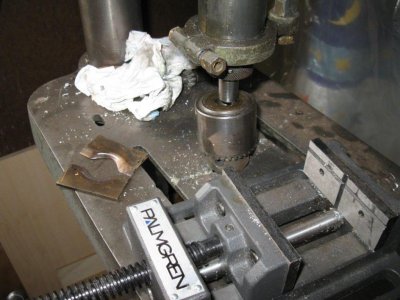
wedges
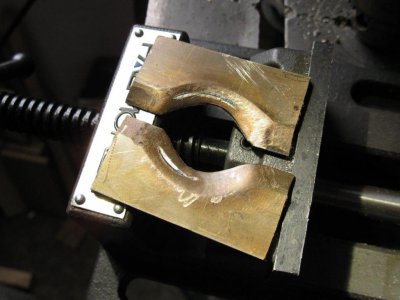
knurled collar
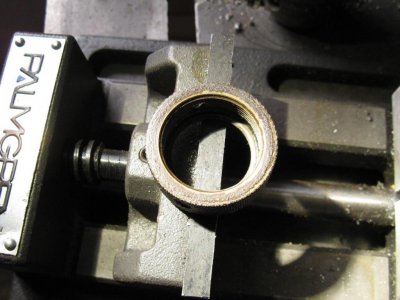
place where collar threads
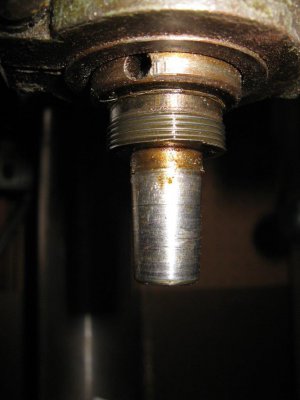
up the taper's skirt, so to speak, so you can see how the collar would hold something onto the adapter
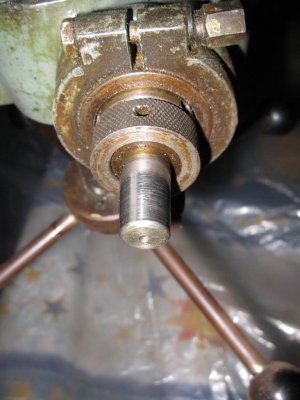
so, I've never worked with steel before - what would be the best type to use? I've heard a lot of people talk about 12L14 as being a good all round steel. I'm assuming that I won't need to harden the adapter, is that right?
Plan is to find a piece of rod about the thread ID of the collar, machine it down to leave a step so that it slips through the collar. Then bore the taper, turn it around and bore the 3/8th bore for the end mill, then drill through and tap for a bolt that I have laying around (if I need to get it off the taper with any force). Then drill and tap for a set screw to hold the end mill (mine have flats). How does that sound? Anything I'm missing?





it took a lot of grinding and a dead bench grinder, but I finally made the wedges and got the chuck off. First time didn't work as the collar just dug into the wedge, but after heating the wedges to straw/ purple and then dropping them in some old oil they were just hard enough to force the chuck off. In fact, I was about to call it a day as I was getting uncomfortable with the amount of force I was putting on the vise when it popped off.

wedges

knurled collar

place where collar threads

up the taper's skirt, so to speak, so you can see how the collar would hold something onto the adapter

so, I've never worked with steel before - what would be the best type to use? I've heard a lot of people talk about 12L14 as being a good all round steel. I'm assuming that I won't need to harden the adapter, is that right?
Plan is to find a piece of rod about the thread ID of the collar, machine it down to leave a step so that it slips through the collar. Then bore the taper, turn it around and bore the 3/8th bore for the end mill, then drill through and tap for a bolt that I have laying around (if I need to get it off the taper with any force). Then drill and tap for a set screw to hold the end mill (mine have flats). How does that sound? Anything I'm missing?






